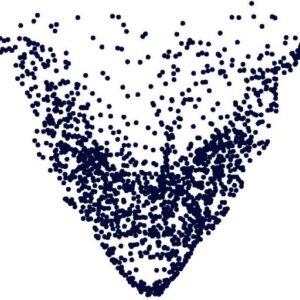Technion – Israel Institute of Technology
Department of Mechanical Engineering
Dynamics is based on an integrated approach that combines the classical methodology of dynamic model formulation (following Lagrange, Hamilton and Jacobi) with the analytical and geometrical developments of nonlinear mechanics (proposed by Liapunov and Poincare’).
This approach enables a comprehensive treatment of both rigid body and continuous dynamical systems incorporating: i) derivation of constrained (nonholonomic) models (via the variational Hamilton’s principle and Lagrange’s equations of motion), ii) solution derivation (integrals of motion, separatrices, averaging), and iii) qualitative behavior of solutions in state space (integrability, symmetry, periodicity, stability). Examples include those of classical mechanics and current applications to interdisciplinary problems governing the domains of dynamical systems, robotics, nano- and micro- electromechanical systems, and flow-structure interaction that can only be described by several types of generalized coordinates and forces.
The objectives of this course are to introduce, develop and apply the fundamentals of analytical dynamics required for derivation and analyses of complex, coupled, nonlinear, spatio-temporal problems of engineering mechanics.
Topics
- introduction to calculus of variations and Hamilton’s principle.
- generalized forces, nonholonomic constraints and Lagrange multipliers.
- Lagrange’s and Hamilton’s equations (multiple particle/rigid body dynamical systems).
- Lagrangian densities, Extended Hamilton’s principle (continuous initial-boundary-value problems).
- conservation laws, cyclic coordinates (Routh’s equations).
- stability of fixed points and orbits (Floquet theory), Liapunov functions.
- integrability, separatrices and domains of attraction..
- resonances (primary/secondary/parametric/internal), generalized averaging and Poincare’ maps.
- canonical transformations, Poisson brackets, Hamilton-Jacobi equation.
- applications in rigid body (gyrodynamics, robotic motion, electrodynamics) and continuous (strings/beams in electromagnetic fields) dynamical systems.
Literature
[* – course text books, a – advanced reading)a- Arnold V.I., Mathematical Methods of Classical Mechanics, 1989.
* Goldstein H., Classical Mechanics, 1980.
* Lanczos, C., The Variational Principles of Mechanics, 1986.
a- Marsden, J.E. and Ratiu, T.S., Introduction to Mechanics and Symmetry, 1999.
*Meirovitch, L., Methods of Analytical Dynamics, 1988.
* selected papers.
Procedure
Homework problems (elective: not graded), Midterm (elective: 11/12/2009), and a Final Exam (compulsory, moed A: 31/1/2010; moed B 14/3/2010).
* the midterm grade can only improve the final grade and its weight is %40.
** a final project may be offered to students with very good achievements in the elective midterm
Time & Place
Winter semester 2009/2010,
Thursday (1130-1430).
Lady Davis Bldg. Rm. 443, Technion
Oded Gottlieb
